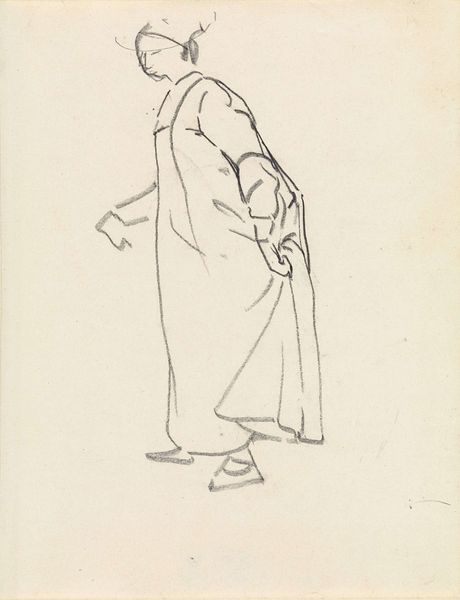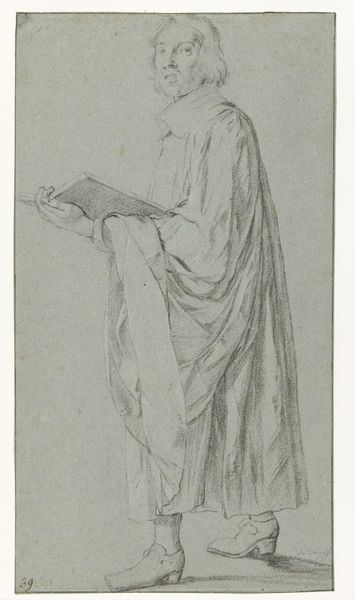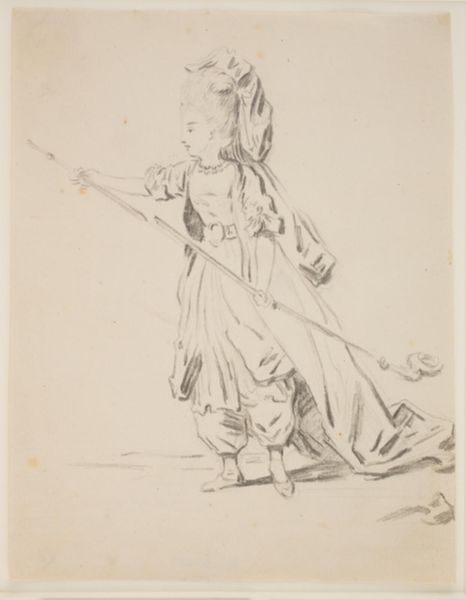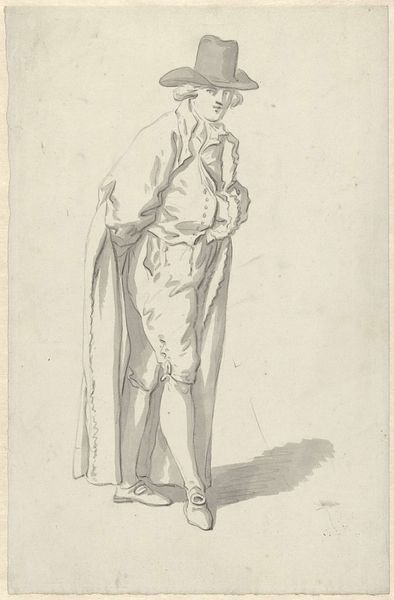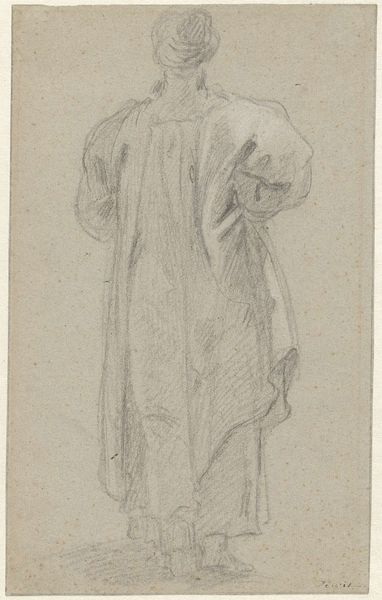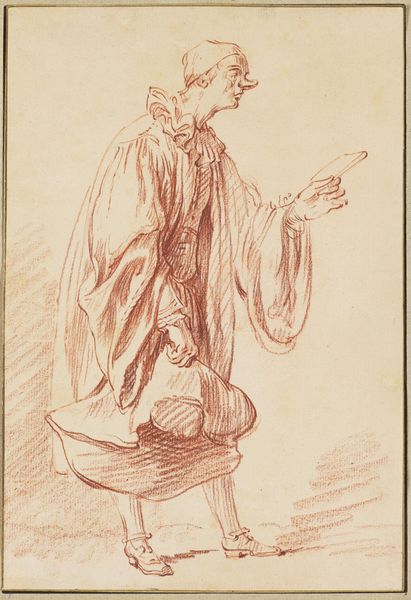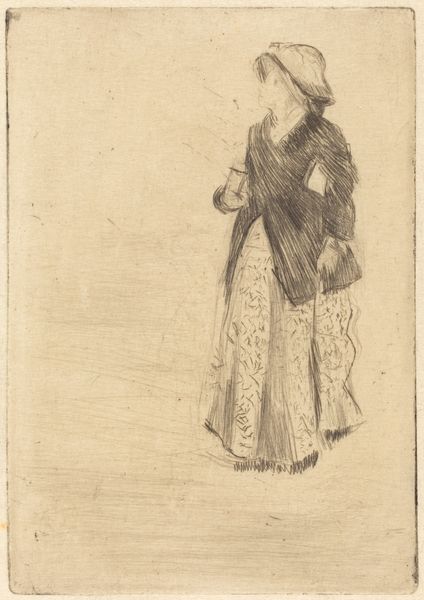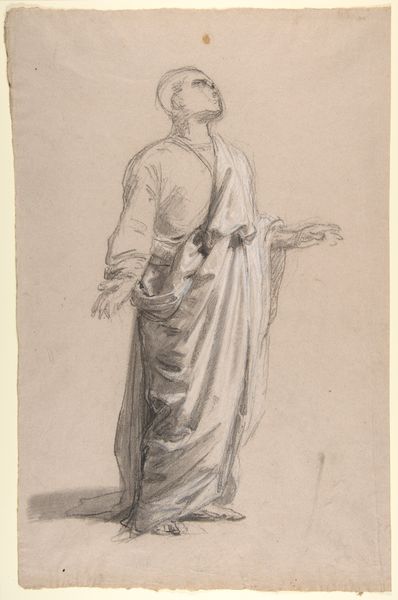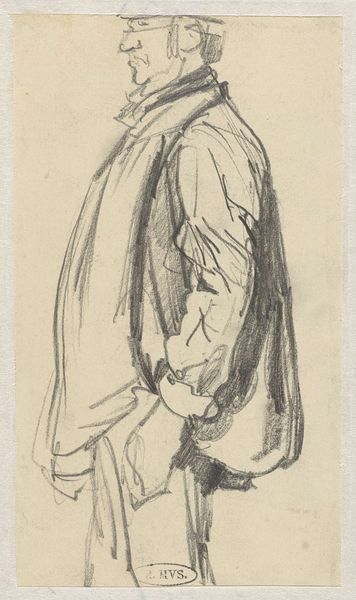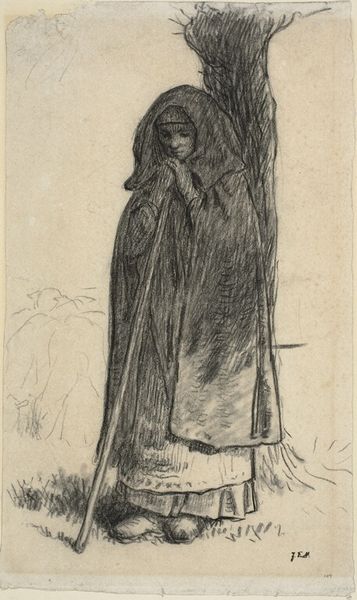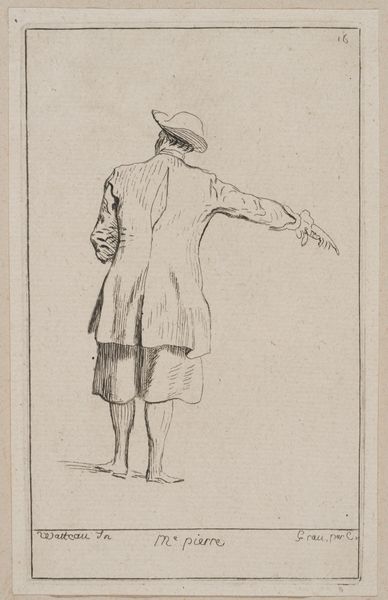
drawing, ink, pen
#
portrait
#
drawing
#
imaginative character sketch
#
quirky illustration
#
light pencil work
#
cartoon sketch
#
figuration
#
personal sketchbook
#
ink
#
ink drawing experimentation
#
pen-ink sketch
#
sketchbook drawing
#
pen
#
genre-painting
#
storyboard and sketchbook work
#
sketchbook art
Dimensions: height 273 mm, width 206 mm
Copyright: Rijks Museum: Open Domain
Curator: Take a moment to observe "Man met steekwapen," an intriguing drawing rendered in pen and ink. It’s attributed to Heinrich M. Krabbé, dating back to before 1898 and held here at the Rijksmuseum. What strikes you first? Editor: There’s a distinct theatricality, a sense of performance almost. The figure, cloaked and armed, looks as though he could be stepping out of a period drama—or maybe even lampooning one? There’s an odd vulnerability in the gaze combined with a dangerous looking weapon he holds to his shoulder. Curator: I see the construction somewhat differently. I find it fascinating how Krabbé has achieved a remarkable sense of volume with such sparse lines. Look at the cape; the way the pen strokes follow the contours creates depth with real skill. Notice the visible sketch lines, which speak to process. Editor: It brings to mind how such attire has been coded for centuries to indicate social status or belonging— think about guilds, religious orders, confraternities, or even secretive cults— that potentially veiled association begs further examination and ties directly to systems of privilege and exclusion based on lineage. Curator: Exactly, and consider the material history of ink during this period; often produced with components easily accessible locally. Could we connect that local production and the nature of labor involved to the types of characters Krabbé was illustrating? Editor: I find the weapon being brandished compelling; who might Krabbé have imagined wielding this tool? Could they be a marginalized figure asserting their agency? Curator: Those points resonate. What seems like a casual sketch may well speak to contemporary anxieties around power structures and emerging voices within late 19th century Dutch society. Editor: Absolutely. So much more than a simple sketch, Krabbé’s "Man met steekwapen" poses essential queries related to societal performance, resistance, and artistic creation, offering plenty of thoughtful avenues into this period and culture. Curator: I concur completely, let's encourage our visitors to delve into not only what Krabbé presents visually but the material realities of the drawing and consider, crucially, from where his creative choices sprung.
Comments
No comments
Be the first to comment and join the conversation on the ultimate creative platform.

